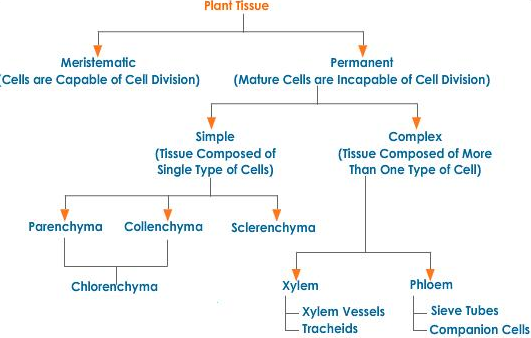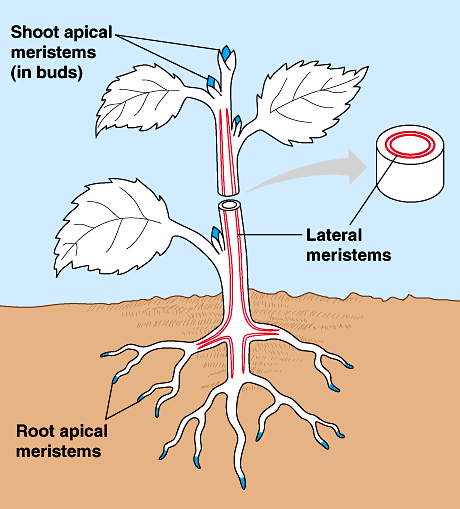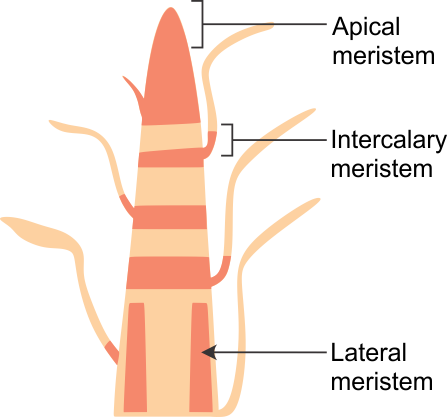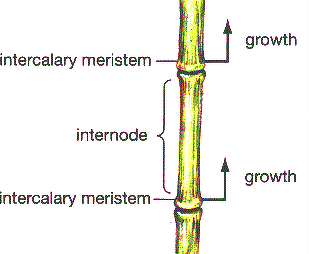Anatomy refers to the study of internal structure and functional organization in living organisms. Cells are the basic building units, which are organized into tissues, organs and organ systems. In angiosperms, monocots and dicots have different internal structure.
Tissue System in Plants
- A Tissue is a group of cells (of same or different type) having a common origin and performing an identical function.
- Branch of biology that deals with the study of tissue is known as histology.
Classification in Plant tissues
Tissues are classified primarily into Meristematic and Permanent tissues.

Meristematic Tissue
Meristematic tissue is composed of actively dividing cells. Growth in plants is restricted to these specialized tissues. The term meristem was coined by Nageli (Gk. meristos: divided). Since they divide to form new cells, they are also called formative cells.
Characteristics of meristematic tissue
- They are thin walled cells.
- The cells have abundant active cytoplasm.
- There is a large prominent nucleus in each cell.
- Reserve food materials are absent.
- They retain power for division.
Classification of Meristematic Tissue
Based on Origin Based on Position
- Apical meristem
- Lateral meristem
- Intercalary meristem
- Promeristem
- Primary meristem
- Secondary meristem
Classification based on Origin:
Promeristem / Primordial meristem
It is a group of cells found in the embryo of the plant. It is found at a very small area at the tip of shoot and root. Promeristem gives rise to the primary meristem.
Primary meristem
It is the tissue formed directly from the promeristem. These cells are seen just below the promeristem. They divide rapidly and give rise to primary permanent tissues which make up the fundamental structure of the plant body.
Secondary meristem
- Some of the permanent primary tissue regains the power of division and becomes meristematic (de–differentiation).
- Such cells are called secondary meristematic tissue.
- They are formed at a later stage of the plant life.
- Growth of secondary meristem is called secondary growth, and the tissues formed by this growth are called secondary tissues. (e.g. Cork cambium, Interfascicular cambium)
Classification based on Position:



Apical meristem
- These are found at the tip of stem and roots.
- The activity of these cells results in increase in the length of the axis.
- Hence, they are also called growing points.
- It includes the promeristem and primary meristem.
- These cells give rise to the primary tissues of the plant body.
Lateral meristem
- These are the meristems found parallel to the sides of the stem.
- They differentiate into secondary tissues (vascular tissue, ground tissue etc)
- Their growth results in increase of the girth or width of the plant.
Intercalary meristem
- They are found between masses of permanent tissue, usually at the base of leaf (as in Pinus) or at the base of internodes (as in grasses)
- They are detached portions of apical meristems, and thus form the primary tissue of the plant body.
- They also results in increase in length of the plant body.